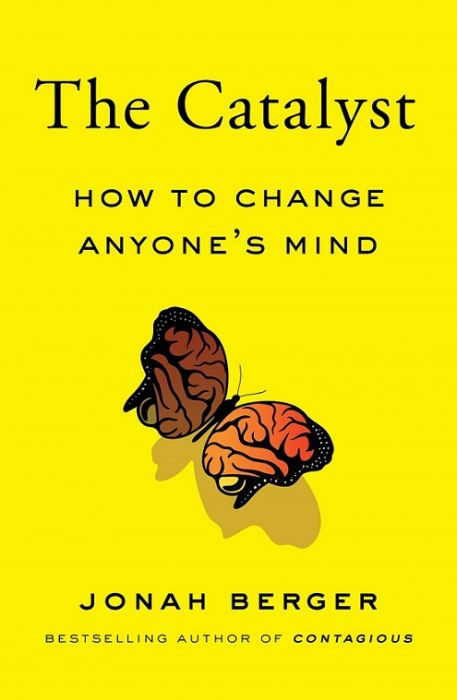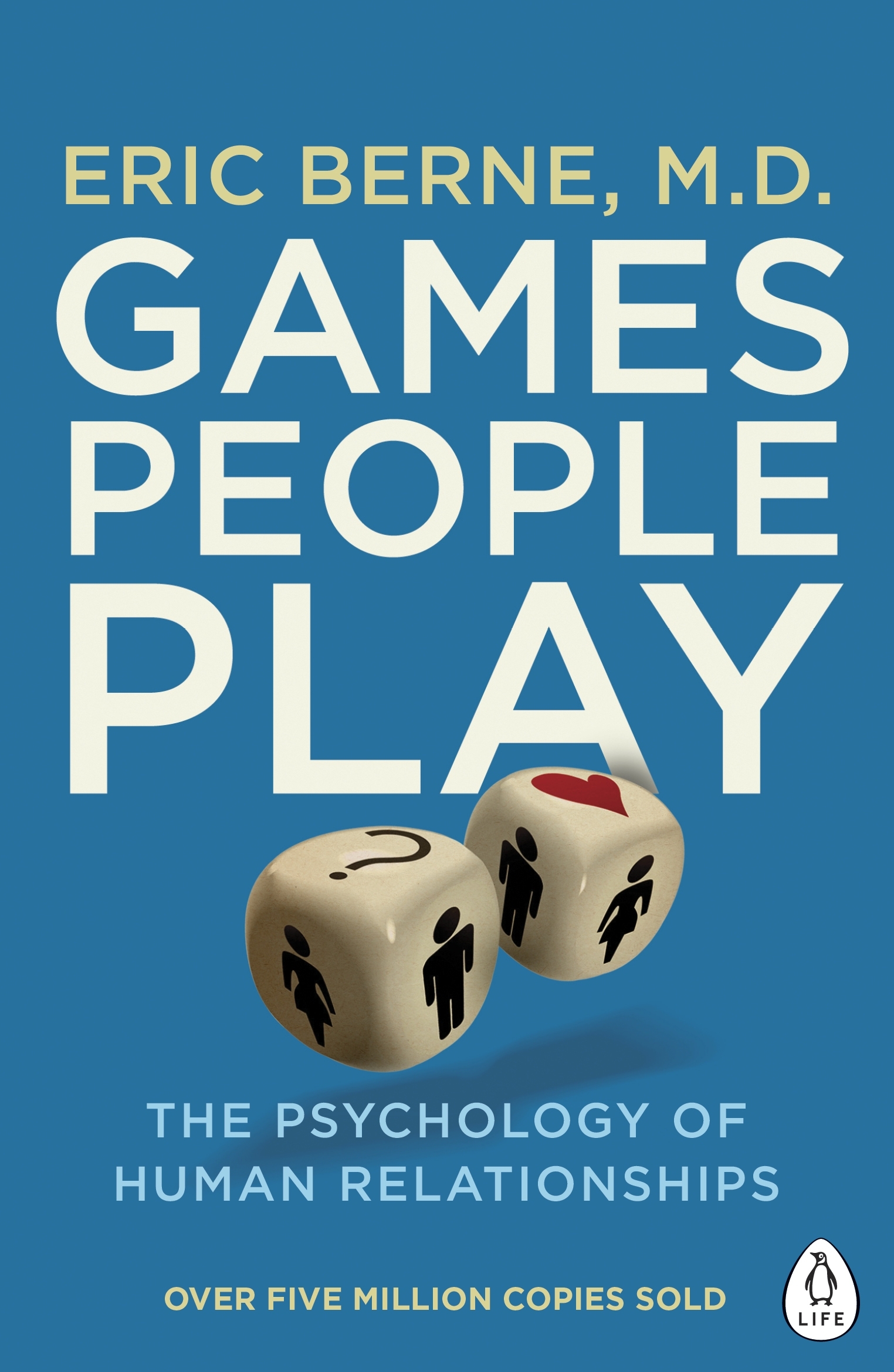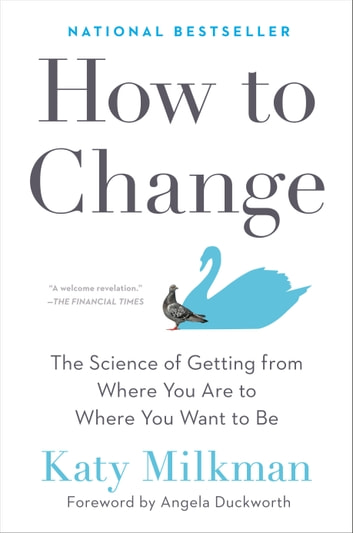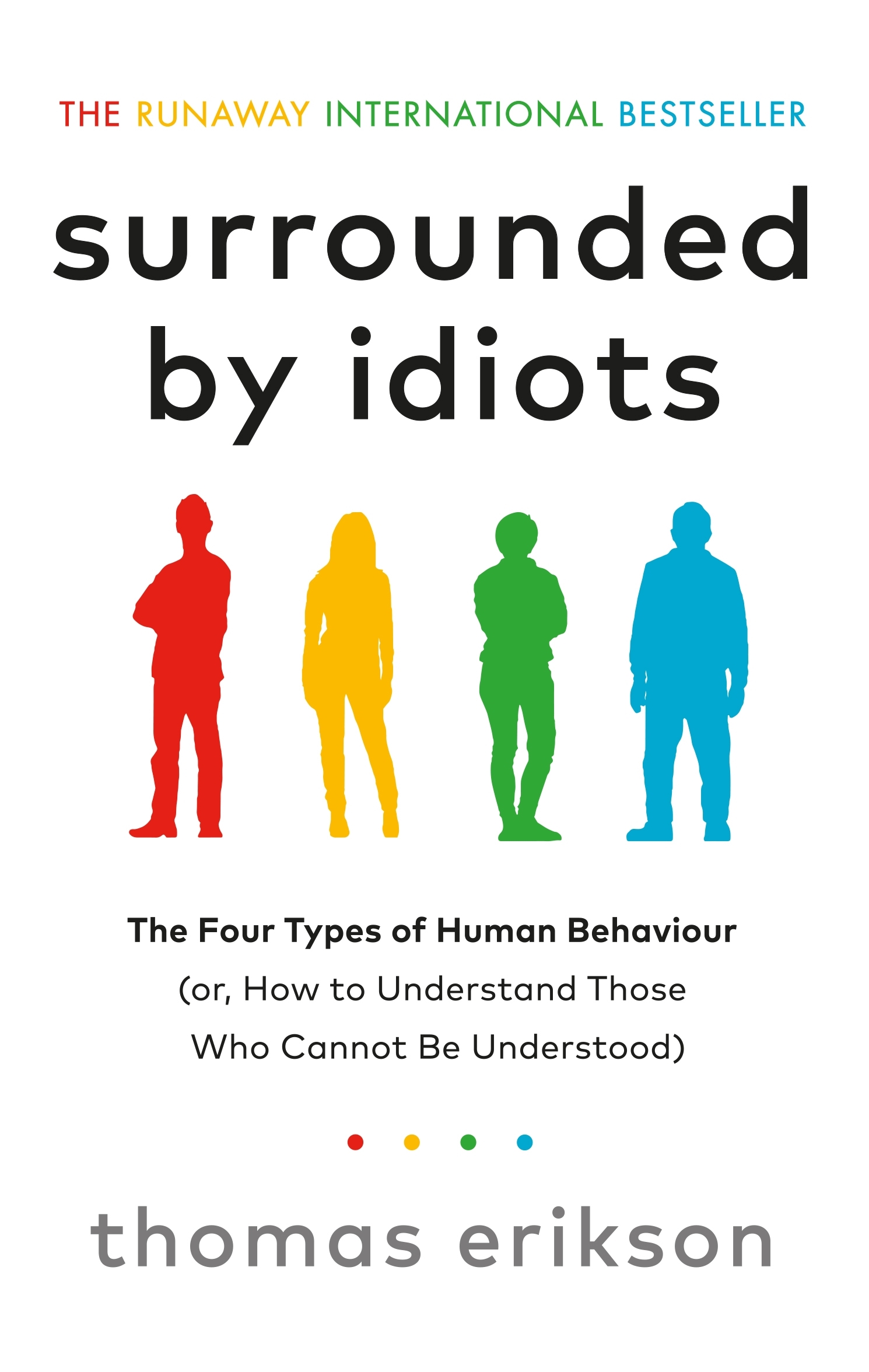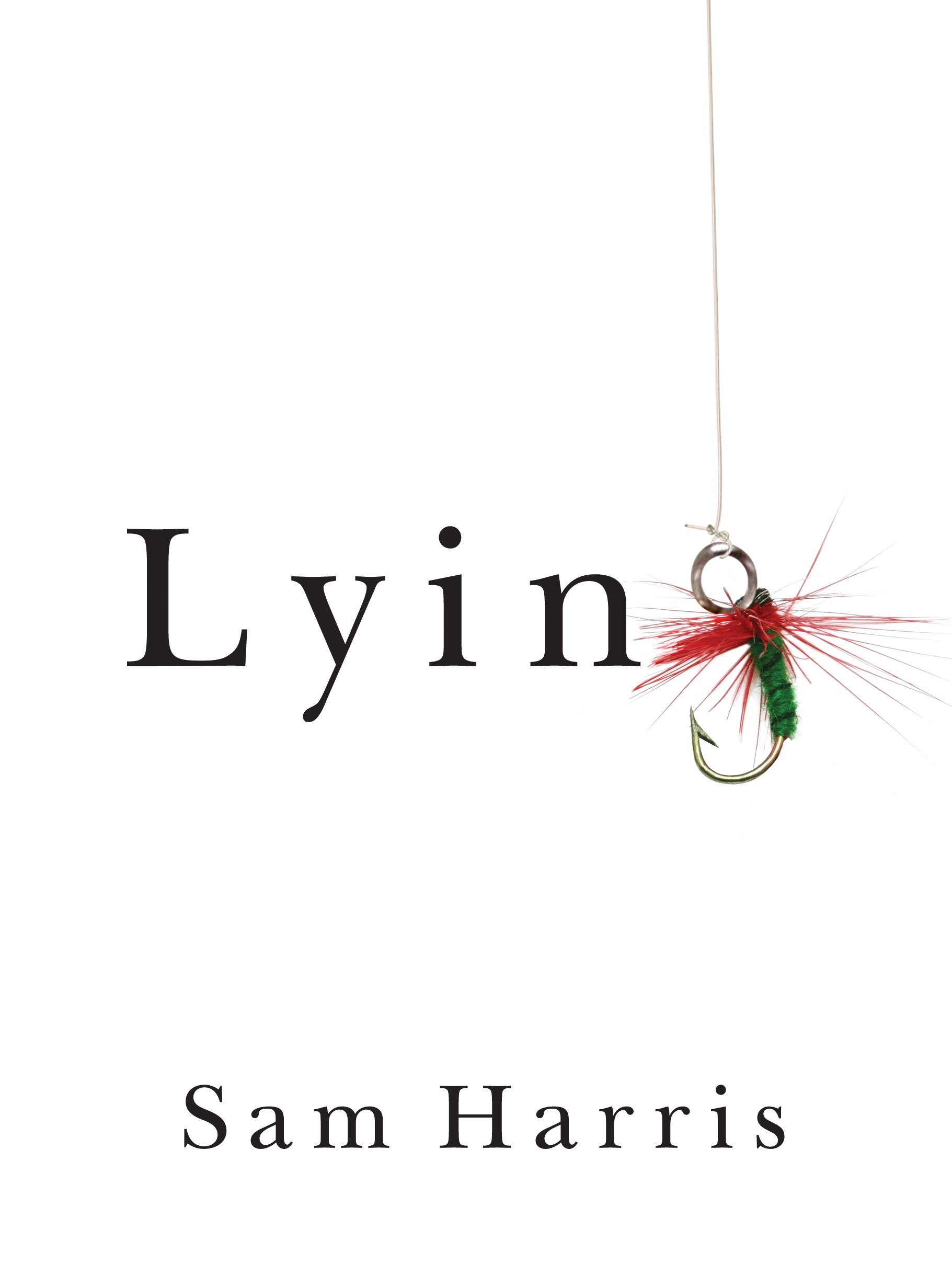Humankind
by Rutger Bregman
- Behaviour
- Ashto =
- Jonesy =
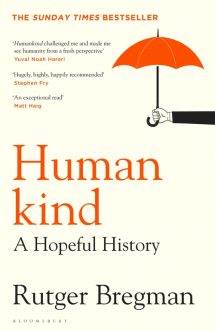
We’ve been doing a lot of dark books recently. Ordinary Men, The Prince, Collapse all paint a dim view of human nature. The idea goes that we have a thin veneer of niceness, but deep down we’re all capable of pure evil.
Thankfully, this book gives the opposite perspective. The simple idea is that we’re actually all pretty decent. Disasters and tough times don’t cause us to descend a few rungs on the ladder of civilisation, but it actually brings out the best in us.
Grab a copy of the book here: https://www.awin1.com/cread.php?awinmid=10920&awinaffid=766963&clickref=WYWL_website&ued=https%3A%2F%2Fwww.bookdepository.com%2FHumankind-Rutger-Bregman%2F9781408898949
Prologue: Humankind
On the eve of the Second World War, the British Army Command found itself facing an existential threat. London was in grave danger. Churchill said London was “the greatest target in the world, a kind of tremendous fat cow, a valuable fat cow tied up to attract the beasts of prey”.
The beast of prey, of course, was Adolf Hitler and his rolling war machine. The fear was that if the British population broke out in terror of Hitler’s bomber planes, the whole city would go to ruin: traffic will cease, the homeless will shriek for help, the city will be in pandemonium. Churchill predicted that 3 to 4 million Londoners would flee the city. They considered a last-ditch attempt at building a series of underground bunkers, but they decided against it worrying that there would be so much fear that no one would ever come out again.
The psychological theory at the time, the theory that drove the likes of Mussolini, Stalin and Hitler, and theories read and understood by Churchill and Roosevelt, was that of Frenchman Gustave Le Bon. The theory goes that in the face of terror, almost instantaneously, man descends several runs in the ladder of civilisation. The idea was that if you struck fear in people, they would destroy themselves and everything around them. You wouldn’t have to do it to them, they’d do it to themselves.
So on September 7, 1940, there were 348 German bomber planes that flew across the English channel and started dropping bombs. What followed is now known as “The Blitz”. More than 80,000 bombs were dropped on London over the next 9 months, and more than 40,000 lost their lives.
So what happened? How did the British react? What happened when the country was bombed hundreds of times a day for months on end? Did people get hysterical? Did they behave like brutes? Did they descend multiple rungs in the ladder of civilisation?
It turns out that big Gustave Le Bon was totally wrong. An eyewitness account reported that small children continued playing in the streets, shoppers continued haggling in the markets, police continued directing traffic. No one even looked up to the sky. When a journalist asked “weren’t they afraid?”, he replied: “Oh no – what good would that do us?”.
It seems like Hitler had forgotten to account for one thing: The quintessential British character. The stiff upper lip. The wry sense of humour. Shopkeepers put out signs saying “More Open Than Usual” or “our windows are gone, but our spirits are excellent – come on in and try them”. Hitler’s tactics, the ones that were supposed to derail the psyche of the population, didn’t even derail the trains. It barely put a dent in the British economy, everything continued basically as normal. And the mental devastation that was supposed to follow? the millions of traumatised victims that were expected? oddly enough there were basically none to be found. There was sadness and fury, there was terrible grief at the loss of loved ones, but the psychiatric wards remained empty.
In fact, public mental health actually IMPROVED. Alcoholism tailed off. There were fewer suicides than there were during peacetime. After the war ended people referred back to the Blitz times longing, remembering how everyone helped each other and looked out for one another. British society became in many ways STRENGTHENED by the blitz… the effect on Hitler was disillusioning.
When put to the test, Le Bon’s theories could be hardly further from the mark. Crisis didn’t bring out the worst in people, it brought out the BEST. If anything, they moved UP a few rungs on the civilisation ladder. The courage, humour and kindness of ORDINARY MEN continue to be astonishing under conditions that possess many of the features of a nightmare.
BUT – then the theory shifted. The psychologists aid that a nation’s morale COULD be broken… it just didn’t work on the British because they were a special case, a special type of people… Churchill’s right hand man said that Le Bon was right – he too took a dim view of the masses, and he said that bombing works because most people are cowardly and easily panicked. When the tables turned, the British decided to try the same tactics but in revere, sure that it would work this time…
British press said that the Germans had such a lack of moral fibre that they wouldn’t be able to stand even a quarter of the bombing that the UK went through. Even though all of the research from the UK showed that there was no evidence of breakdown of morale, he ignored the findings and designed a bombing strategy that he believed was a sure bet to break the Germans. He ignored the research findings and wrote his own letter to Churchill, saying “having one’s house demolished is most dangerous to morale. people seem to mind this more than having their friends or relatives killed… so in order to do the most harm we should bomb German towns – there seems little doubt that this would break the spirit of the German people”.
Churchill gave the signal and all hell broke loose in Germany. The British destroyed more than half of Germany’s towns and cities. The number of casualties in these German bombings were more than 10X the number of British deaths during the Blitz. Churchill maintained that the surest way to win wars was to drop bombs on civilians to break the country’s morale. The Royal Air Force leader said the same: “the more we bomb, the more satisfactory the effect”.
Did it work this time??? There was no sign of mass hysteria. In fact, in places that had just been hit, there was a sense of relief – neighbours helped each other out, feeling that the worst was over. They pulled victims from the rubble, they put out fires, member of Hitler Youth flooded the towns to help the homeless and injured. A grocer put out a sing “Disaster Butter Sold Here” (not as witty as the British signs, but fair crack).
The scientific findings were stark: the civilian bombings had been a fiasco – they appeared to have STRENGTHENED the German wartime economy and actually PROLONGED the war. German tank production went up 9X and jets 14X during these bombings. They found that workers in cities that had been bombed became MORE productive than those in cities that weren’t.
They concluded that this was perhaps the greatest miscalculation of the war. All of the main actors in war (on BOTH sides) fell into the same trap. They thought that human nature was fragile, and the civilisation would crack under the pressure of air raids. But the more they bombed, the STRONGER it got.
Unfortunately, military experts are slow to learn… 25 years later, the US dropped 3 times as much fire power on Vietnam as they did in the entire Second World War… and lost. Even with the evidence right in front of them, they still managed to deny it. It turns out that this strength and resilience wasn’t a uniquely British thing, but an entirely HUMAN thing.
A New Realism
Imagine a scenario:
An airplane makes an emergency landing, breaks into three parts, the cabin fills with smoke, everyone inside realises that they need to get out as soon as they can. Which scenario sounds more likely?
PLANET A: the passengers turn to their neighbours to ask if they’re ok, those needing assistance are helped out of the pane first, people are willing to risk their own lives to help random strangers.
PLANET B: everyone is left to fend for themselves, there is a mad rush for the exist, panic breaks out, there’s lots of pushing and shoving, the children/elderly/disbale are trampled by the mad crowd as they rush out
97% of people estimate that we live on Planet B, that mass panic is the most likely. But it has been found in almost every case that we live on Planet A – we are kind and we help each other where we can. If you watch the Titanic movie it looks like panic, but if you ask people who were actually there they say that the evacuation was actually quite orderly. Or think of September 11 – as the twin towers burned, thousands of people calmly descended the emergency stairs, even though their lives were in immediate danger. They stepped aside for firefighters, they let the injured be carried ahead of them. People would actually stop and say “no on, you go first” or “please take my place” – there was no madness.
There is a persistent myth that by our very nature humans are selfish, aggressive and quick to panic. Dutch biologist Frans de Waal calls this “veneer theory”, the notion that civilisation is nothing but a thin veneer that could crack under the slightest pressure. But in actual fact, in times of crisis (when bombs are being dropped or flood waters are rising), then we humans become our best selves. We may have a good side and a bad side, but there is considerable scientific evidence showing that in times of crisis we overwhelmingly turn to our good side.
An old man says to his grandson, “there’s a fight going on inside me, a terrible fight between two wolves. One is evil – angry, greedy, jealous, arrogant and cowardly. The other is good – peaceful, loving, modest, generous, honest, and trustworthy. These two wolves are fighting within you too… and every other person on the planet”
After a moment the boy asks “which wolf will win?”.
The old man smiles: “The One You Feed”.
The Rise of Homo Puppy
The first thing to understand about the human race is that, evolutionarily, we’re babies. If you scale down the entire history of life on earth, you can display all 4 billion years on a one-year calendar, with the big bang at 12:01am on January 1st. Up until October, the bacteria had the whole planet to themselves. It wasn’t until November that life as we know it started to appear. On Christmas Day, December 25th, the dinosaurs go extinct. It isn’t until the final hour of the entire year, at 11pm on the 31st of December, that humans start to appear. At 11:58, we see the agricultural revolution. Everything we call “history” happens in the final 2 minutes – pyramids, castles, steam engines, rocket ships…
In the blink of an eye, humans populated every corner of the globe, from the coldest tundras to the hottest deserts. We even were the first species to leave earth and set foot on the moon. Why wasn’t the first species on the moon a banana? or a cow? or a chimpanzee? These might sound like stupid questions, but genetically we’re 60% the same as a banana, 80% the same as a cow, and 99% the same as a chimpanzee. How would that 1% make all the difference?
For a long time we considered it part of “God’s Plan”, that we were the chosen ones, superior to other species in every way. But if aliens landed on Earth 10 million years ago, there would’ve been no way they could predict the growth that would come. The planet was literally the planet of the apes. There was no one building cities, writing books, or launching rockets.
Even though we consider ourselves so unique, we are really just the products of a blind process called evolution. We belong to a raucous family of mostly hairy creatures also known as primates. Right up until 10 mins to midnight, we had other hominins for company… until they mysteriously disappeared. Charles Darwin, the purveyor of the theory of evolution, said that there were a few key ingredients for the evolution of life: lots of suffering, lots of struggle, lots of time. In short, the process of evolution was straightforward: animals have more offspring than they could possibly feed, those that are slightly better adapted to their environment have a slightly higher chance of surviving and procreating (a thicker fur, better camouflage, a pointier beak, a longer neck, etc), these different miniscule variations end up branching out into a vast and varied tree of life, over the course of 4 billion years, we get to the diversity of species that we have today.
Darwin had once considered becoming a priest, so he felt an internal struggle between reconciling the cruelty of nature with the biblical story of creation… It ultimately destroyed his faith in God – if there was a divine creator, what kind of sicko would come up with this system? One example was the parasitoid wasp, an insect that lays its egg INSIDE a live caterpillar… when the egg hatches, the larvae eat the caterpillar from the inside out, leading to a horrific drawn out death. Darwin was so troubled that he held off publishing these theories. He wrote a letter to one of his mates, saying it felt like “confessing a murder”.
While 99.9% of species have gone extinct, why are we still here?
Maybe because we’re STRONG? Not true – chimpanzees can clobber a human without breaking a sweat. A bull and charge and pierce us with its horn. As babies, humans are completely useless for years. We remain frial and slow, and we can’t really climb trees for safety
Maybe because we’re so CLEVER? We are smart, but our brains aren’t very efficient – 2% of our body weight but saps 20% of our energy. And most of our knowledge and skills are learned. A study testing human toddlers, chimpanzees and orangutans on three domains of intelligence (spatial understanding, calculation, causality). Humans did better than orang-utans, but actually slightly WORSE than chimpanzees. Then they did a test of adult humans against adult chimpanzees in SPEED of processing information and WORKING MEMORY and they wiped the floor with us. There were 9 squares and numbers 1 through to 9 flashed on the screen for less than one second, you had to click the squares in order. When it was medium difficulty humans and chimps were on par. When it was ramped up by showing the numbers for less time, chimps dominated.
Maybe we’re more CUNNING? We can weave a web of lies and deception in order to gain (and stay in) power. Proponents of this advice say we’ve been doing it for millions of years – devising even more inventive ways of swindling one another. Because telling lies takes way more cognitive power than telling the truth, our brains grew into these sapiens superbrains. But researchers have found that we can’t always beat other primates in games of deception that hinge on conning your opponent. Chimps score higher on tests that involve lying. Humans are wired to naturally trust each other, which makes us such suckers for cons.
Scientists found that 50,000 years ago, at least FIVE other hominins stood beside us: homo erectus, homo floresiensis, homo luzonensis, homo denisova, and homo neanderthalensis. We have to face the uncomfortable fact that, until not long ago, our species shared the planet with other kinds of humans. All of these were humans in the same was as there are different types of finches – the goldfinch, the house finch, the bullfinch. To us, they all just look like birds.
So while one question is why do we put chimps in zoos instead of the other ways around? Another question is why are we still here while our human cousins the neanderthals are extinct? Were they WEAKER than us? Not likely – the average neanderthal was like the toughest sapien, like the Arnie type pumping iron on Venice Beach. While homo sapiens were foraging for nuts and berries, the wild Neanderthals were out there trying to take down large game. There’s no way you could say that we survived because we were stronger.
Were they DUMBER than us? Even more uncomfortably… no again. Their brains were actually 15% BIGGER than ours – 1500 cm3 compared to 1300 cm3. They got the macbook pro, we got the macbook air. Scientists keep finding more and more proof that they were actually supremely intelligent. They built fires, cooked food, made clothes, musical instruments, jewellery and cave paintings. There’s even some evidence we stole some ideas from them, like stone tools.
Flash forward to the wild Russian, Dmitri Belyaev. He travelled to Siberia, on the border of Kazakhstan and Mongolia, to launch an experiment. He wanted to get some Siberian foxes, and turn them into “dogs”.
A century earlier, Charles Darwin noted that domesticated animals had some remarkable similarities – like pigs, rabbits, sheep, and so on. Firstly they were a few sizes smaller in domestication than their wild cousins. They had smaller brains and teeth, floppier ears, curlier tails, and lighter coloured fur. Also, they retain many juvenile traits for their whole lives.
Dmitri had one theory… all of these factors were the by-product of the one crucial piece of the puzzle: Friendliness. Dmitri chose the Silver Fox as his subject, an animal that had never before been domesticated, an animal so viciously aggressive that researchers could only handle them while wearing elbow length, two-inch-thick gloves as protection. Dmitri warned his research partners not to get their hopes up – he said this wild experiment could take years, even their whole life time, and they may have nothing to show for it at the end as nothing would work…
For the first batch, he did the round of the cages of the foxes he’d caught. With his elbow length gloves, he’d reach his hand into the cage. If they attacked straight away, they were deemed too aggressive. If there was the slightest hesitation, he took this as a positive sign, and saved this one for breeding for the next generation. They continued with this, always trying to mimic “natural selection” and fast-tracks centuries of evolution by actively selecting the qualities they wanted. The friendliest foxes were kept for breeding, the most vicious ones were released to the wild.
In the 4th generation, the first fox started to wag its tail. The researchers tried to maintain their distance, so that the developments would be through natural selection rather than learned traits, but eventually the fox cubs were BEGGING for attention and affection. In the wild, fox cubs get super aggressive at about 8 weeks old. But by always keeping the most friendly cubs and breeding these ones they remained permanently juvenile – they didn’t want to hunt, they just wanted to play all day.
The researchers started to notice physical changes too. The ears dropped. Their tails curled. Light spots appeared on their coats. Their snouts got shorter, their bones thinner, males started looking more like females. Before long, foxes started responding when the researchers called their names – a trait NEVER seen in foxes ever before. Their only criterion had been friendliness, everything else came as by-products. They even did blood testing and found that the tamer foxes produced less stress hormones and more serotonin (happiness hormone) and oxytocin (love hormone) than the wild foxes.
Applying this theory to humans, Dmitri hypothesised that humans were basically just domesticated apes. For tens of thousands of years, the NICEST humans had the most kids. The new theory: “survival of the friendliest”. If you look at images of neanderthal skulls and homo sapien skulls, the comparisons are quite similar to the differences between wild silver foxes and domesticated dogs. Neanderthals had a big chin and a huge thick skull – the foxes have big strong jaws and thick heads too. Just like the tamer dogs who got more slender and their bones got thinner, us homo sapiens have much smaller heads and more delicate features than neanderthals. Compared to foxes, dogs got smaller and cuter. Compared to neanderthals, homo sapiens got smaller and cuter. Over the last 200,000 years, our bodies have grown considerably softer, more youthful, more feminine, our brains have shrunk by at least 10%, our teeth and jawbones have become paedomorphic. we’ve become more “childlike”. Just as mature dogs look like wolf puppies… mature humans look more like baby monkeys. But how were these “Homo Puppies”, the smaller weaker versions, able to conquer the planet???
While while we found that young chimps dominated human toddlers on most intelligence tests, there was one test that humans won out comfortably: “object choice test”. A bunch of objects are placed on a table, and a tasty treat is hidden inside one of them. The researcher gives some visual clues as to where the treat is. The subject (the toddler or the young chimp) has to then try to find which object has the treat hidden inside. No matter how emphatically the professors tried to point to which cup had the hidden banana inside, the chimps were useless. They got it about 51% of the time, basically as good as a random guess. Once toddlers trusted the professors, they were up to 99%.
The apes were so useless that one researcher even said “I bet my dog could do better than that”. So he brought in his dog, and the dog was able to read the humans cues (and trust them) and was getting it right 90% of the time. Dogs have much smaller brains than chimps, but in this area, they’re more “intelligent” and are able to cooperate better with humans.
One explanation is that this type ability arose in dogs on its own – it just so happened that humans and dogs both have this trait, OR that this evolved as a chance by-product just like the droopy ears and curly tails. Thankfully there was research done to test this. They were able to test the silver foxes with this “object choice test”. Dmitri had bred them on the basis of “friendliness”, not “intelligence”… but it was worth testing. Long story short – the 4th generation “friendly” puppies dominated this test, they were far better than the aggressive wild foxes! Even though domestication reduces our brain size and seems to diminish brainpower, we actually find something different: if you select for friendliness, increased intelligence comes along as a by-product.
Even though it would make an awesome movie, it turns out that these weak homo sapiens wiped out the neanderthals because they were stronger or meaner. It turns out that we were better able to cope with the last ice age (115k – 15k years ago) because we’d developed the ability to work together. It turns out that co-operation is vital to survival.
When the Soldiers Came Out of the Trenches
World War I started in July 1914 and had been going for a couple of months. As 1914 was coming to an end, almost everyone thought that the war was bound to come to an end soon. People were rejoicing in the streets at minor victories, believing these were signalling the end… but the worst was still to come.
It was Christmas Eve, 1914. The British and the Germans were lined up in trenches outside a small town in France. Both thought it possible that the enemy would be planning an attack on Christmas or New Years Eve, when the other side wasn’t expecting it.
Then at about 7pm or 8pm in the evening, something strange happened. First a light popped up above the other trench. Then more lights. More and more lanterns were being lit. Then shrubs popped up… Christmas trees??? Then they heard it. “Stille Nacht… Heilige Nacht…”
One of the British soldiers later said “I’ll never forget that – it was one of the highlights of my life”. Once the Germans finished singing, the Brits responded with a rendition of The First Noel. Then the Germans applauded, and the two camps sung O Come All Ye Faithful in unison. It was amazing – two warring nations, singing Christmas carols together, in the middle of the greatest war in history…
There’s another story of a Scottish regiment stationed in Belgium that goes a step further. One Scottish bloke calls out to the Germans to ask if they have a spare ciggie. The german voice replies, saying “come over and get it”. The Scotsman walks out across no mans land to the opposing trench. They start chatting, he says it was like two long lost friends who were getting reacquainted that had known each other all their lives. Soon enough, they were all out of their trenches, sharing drinks and smokes, telling stories. The people that they’d hours earlier been trying to kill were now laughing and chatting all night. They’d gone from shooting each other to shooting the shit.
The unofficial “Christmas Truce” happened in battles all over Europe. On Christmas morning, the bravest soldiers from each side jumped out of the trenches and walked to meet in the middle of No Mans Land to shake hands and give hugs and say Merry Christmas. Some exchanged gifts, swapping english tea and chocolate and pudding for German sauerkraut and schnapps. There were even games of soccer where they used helmets as the boundary lines and rifles as the goal posts.
Even though the soldiers had been propped out by fear mongering and hate propaganda, all it took was something like this to realise that the enemy were all just humans like us. They also had people at home they loved and people who missed them. They too were scared of war. They too just wanted to hug and sing and play soccer.
One thing we all need to remember is that everyone is rather similar. Don’t pay attention to the angry voters ranting on the TV, or the refugee statistics, or the criminal in the mugshot… in a different life, that person could quite as easily have been our neighbour, our friend or our loved one. The more we dig our own trenches and try to separate “us” from “them”, the more we lose sight of reality. We’re lured into thinking that the small, hate-mongering minority reflects all of humankind. Like the handful of anonymous trolls that are responsible for almost all of the hate and venom on Twitter and Facebook, it is only the very small minority that are truly evil. Like everything in life, the more you give the more you get – it goes for peace during wartime, but it goes just the same for trust, love, friendship and kindness.




